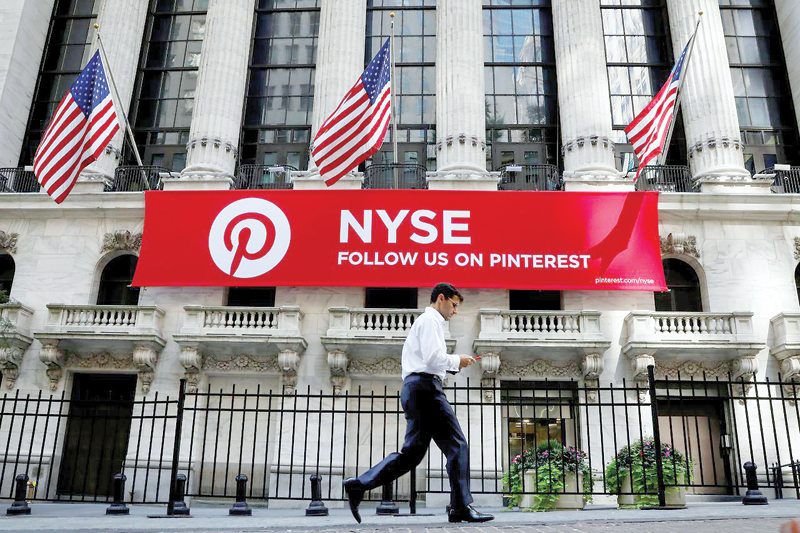

Gina Chon -
Pinterest’s future relies on pegging global sales growth. The social scrapbooking app has a healthier balance sheet than other startups going public. Revenue growth has outpaced expenses, shrinking its net loss by 65 per cent over two years to $63 million. Most of its user expansion, though, comes from overseas enthusiasts, still far less lucrative than those at home.
Most tech startups going public are losing money. Pinterest has improved its finances: revenue grew by more than 150 per cent from 2016 to $756 million in 2018, while costs expanded by about 70 per cent.
It could be valued around $13 billion, according to media reports, compared to a last tag of $12 billion after a fundraising round in 2017.
Whether it will deserve its rich multiple of about 17 times ad sales, though, depends on its international growth.
Pinterest’s US user expansion was almost flat last year, growing only 2.5 per cent from the first quarter of 2018 to 82 million monthly active users in the fourth quarter. Its base abroad has grown more rapidly, up 15 per cent in 2018 to 184 million users.
Yet the vast bulk of Pinterest’s revenue comes from America, which made up about 94 per cent of fourth quarter sales, and is still far more lucrative.
A user in the United States was linked to an average of $9.04 in revenue, while the overseas figure was $0.25.
Facebook, by contrast, gets about half of its ad revenue outside the United States and Canada. Still, its average revenue per user in that region is $34.86, about three times that of a user in Europe.
It could just be a matter of timing. Pinterest says it initially focused on sales in the United States and is now tackling other markets.
But while digital advertising is increasing across the Atlantic, the traditional version is still dominant. Online spending was projected to increase by 3.6 per cent in Europe in 2018, making up about 40 per cent of the overall market, according to eMarketer. The region’s new privacy rules could also hinder efforts.
Pinterest does have logical commercial upside. There’s a natural connection between users, mostly women, looking at ideas for weddings or the holidays, and advertisers.
The trick will be capitalising on that to pin down more cash from overseas. — Reuters
Oman Observer is now on the WhatsApp channel. Click here



